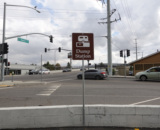By understanding your customers’ customers, industry suppliers can better understand the products that will resonate with buyers and boost profits for truckstop and travel plaza owners and suppliers alike. Driver demographics can vary by fleet, and Highway Business Matters has compiled information from several sources to help paint a picture of the average professional truck driver.
According to the Bureau of Labor Statistics (BLS), employers typically pay long-haul drivers by the mile, with bonus opportunities available. BLS collects data on driver wages and reported that the median hourly wages of heavy truck and tractor-trailer drivers broke down to $17.92 in May 2008, the latest date for which information is available. The middle 50 percent earned between $14.21 and $22.56. The lowest 10 percent earned less than $11.63, and the highest 10 percent earned more than $27.07.
Randall-Reilly Publishing Company gathers data on the professional drivers that read Truckers News. In its 2010 Truckers News Reader Profile Report, Randall-Reilly reported that 42 percent of drivers earned $39,999 and below after paying all expenses, such as fuel, insurance, equipment payments and maintenance. About 25 percent earned between $40,000 and $49,999, 12.8 percent earned between $50,000 and $59,000, 7.8 percent earned between $60,000 and $69,000 and 11 percent earned $70,000 and up.
NPTC’s recent survey found that the average private fleet driver is 47.5 years old, while the Trucker’s News survey found that 58.5 percent of drivers are between 35 and 54, 35.7 percent are 55 and over and just 5.8 percent are under 35.
The Department of Transportation regulates work hours and other working conditions of truck drivers. The agency reported that long-distance drivers cannot drive more than 11 hours per day, and work a total of no more than 14 hours—including driving and non-driving duties. Between working periods, a driver must have at least 10 hours off duty. Drivers also cannot work more than 60 hours in a week without being off-duty for at least 34 hours straight.
NPTC reported that drivers work an average of 61.65 hours per week, which is up five hours from 55.3 hours reported last year. Of those weekly work hours, 38.3 are spent behind the wheel and the rest are spent performing non-driving tasks, including loading and unloading. About 44 percent of drivers working for private fleets were expected to load freight and 71 percent were expected to unload it, NPTC said.
When it comes to drivers’ downtime, Randall Reilly found that the top five hobbies drivers enjoy include watching television (70.5 percent), listening to music (70.5 percent), fishing (49.8 percent), watching NASCAR (36 percent) and participating in lotteries (34.9 percent). About 22.2 percent of drivers surveyed own a motorcycle, 13.8 percent said they own a boat and 12 percent said they own an RV.
NPTC’s survey showed that 37 percent of all fleets use team drivers in at least a portion of their operation, up from 34 percent last year and 27 percent in 2009. Within fleets that employ team drivers, 17 percent of their operations and 24 percent of their miles are run by teams.
Just over 92 percent of Truckers News readers are male and just over 61 percent are married.
{HBM} Highway Business Matters is a brief semi-monthly newsletter created exclusively for companies that provide products or services to the truckstop and travel plaza industry. Highway Business Matters will keep you informed on trends, tactics, and tips to help you connect to the $65 billion truckstop and travel plaza industry.
Help tailor Highway Business Matters to meet your needs by sharing your feedback and story ideas. Send your input to: atoner@natso.com.
Subscribe to Updates
NATSO provides a breadth of information created to strengthen travel plazas’ ability to meet the needs of the travelling public in an age of disruption. This includes knowledge filled blog posts, articles and publications. If you would like to receive a digest of blog post and articles directly in your inbox, please provide your name, email and the frequency of the updates you want to receive the email digest.

